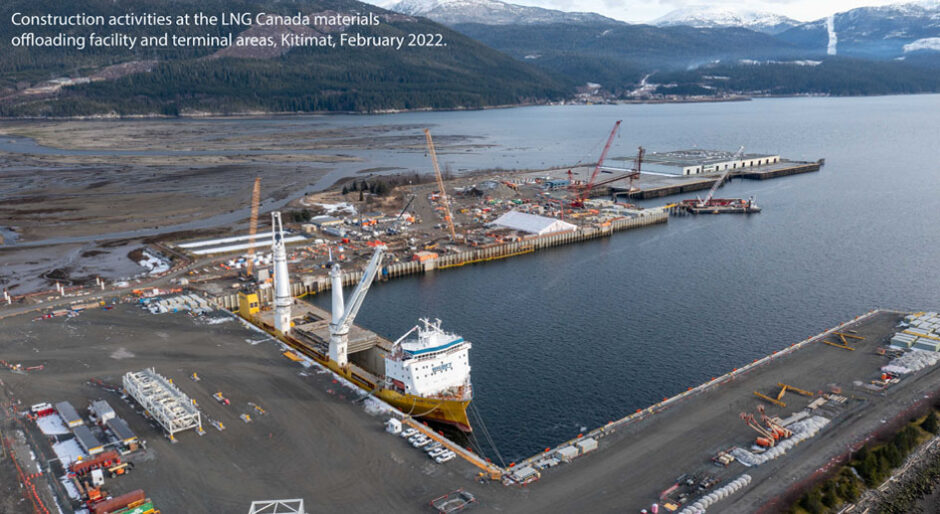How much does a heavy civil project in the Lower Mainland cost to construct in our current market and how sustainable can I afford to make it? These are questions that many infrastructure owners face in the wake of a global pandemic, amidst labour shortages/disputes, following record-high inflation rates, surging insurance premiums, and during continued supply chain disruptions. Many public agencies have sustainability policies and a desire to build sustainable infrastructure in accordance with the ISI Envision framework; however, with upward pressure on direct construction costs in recent years the priorities and focus often start and end with finding a viable funding plan.
Setting budgets on projects as engineers is risky business, particularly with the recent market conditions experienced across Western Canada. The level of design development is key in all of this, and the earlier in the planning/design process you are indicates a higher level of risk on project costs escalating at the time of construction. It is important to establish realistic expectations from all project parties with respect to the level of accuracy indicated by the engineers’ estimate and avoid the temptation to trim costs to meet budget constraints.
We are not contractors, but we do have access to years of historical bid data to assist us in providing parametric reviews on contractor unit rates and pricing to develop a top-down opinion of probable cost for a project. From there, we need to make a judgement call based on our professional experience, often in collaboration with other engineers and relationships we have built across industry with local suppliers to validate our assumptions.
In some cases, for larger and more complex projects, we will conduct a full bottom-up estimate and even have it checked by an independent reviewer who is often an ex-contractor or a senior professional with the experience to ground truth current budget assumptions and complete their own shadow bid to help bring further confidence in the budget being presented. In some cases, we hire third party specialty sub-consultants to provide further costing expertise as and when needed. A trend that has been the same across a variety of infrastructure projects is that we need to carry more contingency in our budgets moving forward.
The problem is that when we encounter the massive swings in market conditions that our region has experienced in recent years, the budgets created prior to the period of market volatility can result in funding shortfalls and become less helpful in further planning efforts required to move towards project execution. The solutions vary by circumstance, but can include cancelling the project, putting it on hold until additional funding can be provided, considering alternative delivery methods, or re-scoping the project to suit the budget constraints based on a revised engineers’ estimate that reflects current market conditions. In some cases, this is impacting vital infrastructure that has been planned for the region over the course of many years of investment, which can have consequences on the overall supply chain network for years to come if it is put on hold or never built.
So, what does the infrastructure industry look like in 2024 and how do we overcome these challenges? According to recent UBS report, private infrastructure funding dropped to a 10 year low in 2023 and concerns around infrastructure sector trends such as deglobalization, digitization (artificial intelligence in particular), and decarbonization have created an abundance of negativity with bearish results – a more optimistic market view is on the rise in the coming year.
The $33 billion Investing in Canada Infrastructure Program is one example of public spending that may be trending upwards. The program has put an emphasis on resilient infrastructure projects and targets four key funding streams with a construction deadline of 2033: public transit, green infrastructure, community/culture/recreation, and rural/northern communities.
With respect to our local B.C. market, across all sectors, the demand for goods, services, and construction by public agencies has been resilient to the market variability (as illustrated by a look at BC Bid opportunities).
Furthermore, there were 1,617 construction opportunities across B.C. in 2023 compared to only 516 construction opportunities advertised in 2022 which supports a relatively more positive trend in our local market. In addition, the B.C. Ministry of Transportation & Infrastructure budgeted more than $4.2 billion for transportation investments in 2023/24 with over $4.6 billion and $4.3 billion planned for 2024/25 and 2025/26 respectively. Overall, our B.C. economy has been tethered by high interest rates over the past couple of years, but has proven to be durable through the pandemic, geopolitical unrest, and climate-related disruptions with indications that 2024 will be a relatively stronger year in terms of infrastructure investments.
In terms of enhancing sustainability on projects and finding innovative ways to work within constrained budgets, there are a number of emerging smart technologies that may help reduce project duration and save design and construction costs. Some of these technologies have been in use for years, and some are more novel, which include: cloud computing, building information modeling (BIM), drones, artificial intelligence, and virtual reality (VR) / augmented reality (AR). These technologies promote resource efficiency, reduce waste, enhance collaboration, enable better decision making, and contribute to an overall more sustainable development during the design, construction, and maintenance of infrastructure projects.
From personal experience working with my colleagues Chuck Rosner, Ward Pristay and Nigel Denby, Stantec’s recent project work on infrastructure investments such as the LNG Canada Materials Offloading Facility in Kitimat have utilized some of these emerging technologies (i.e. cloud computing, drones, BIM design, etc.) which have helped us meet accelerated design-build delivery timeframes and find innovative solutions with our contracting partners in the field.
It is an exciting era with artificial intelligence on the rise, and it will be interesting to see how our industry may overcome budgetary challenges to utilize smart technologies that will continue to reshape how we deliver sustainable infrastructure.
Kip Skabar, P.Eng., P.E., ENV SP, is senior principal, commercial ports leader at Stantec in Vancouver.










